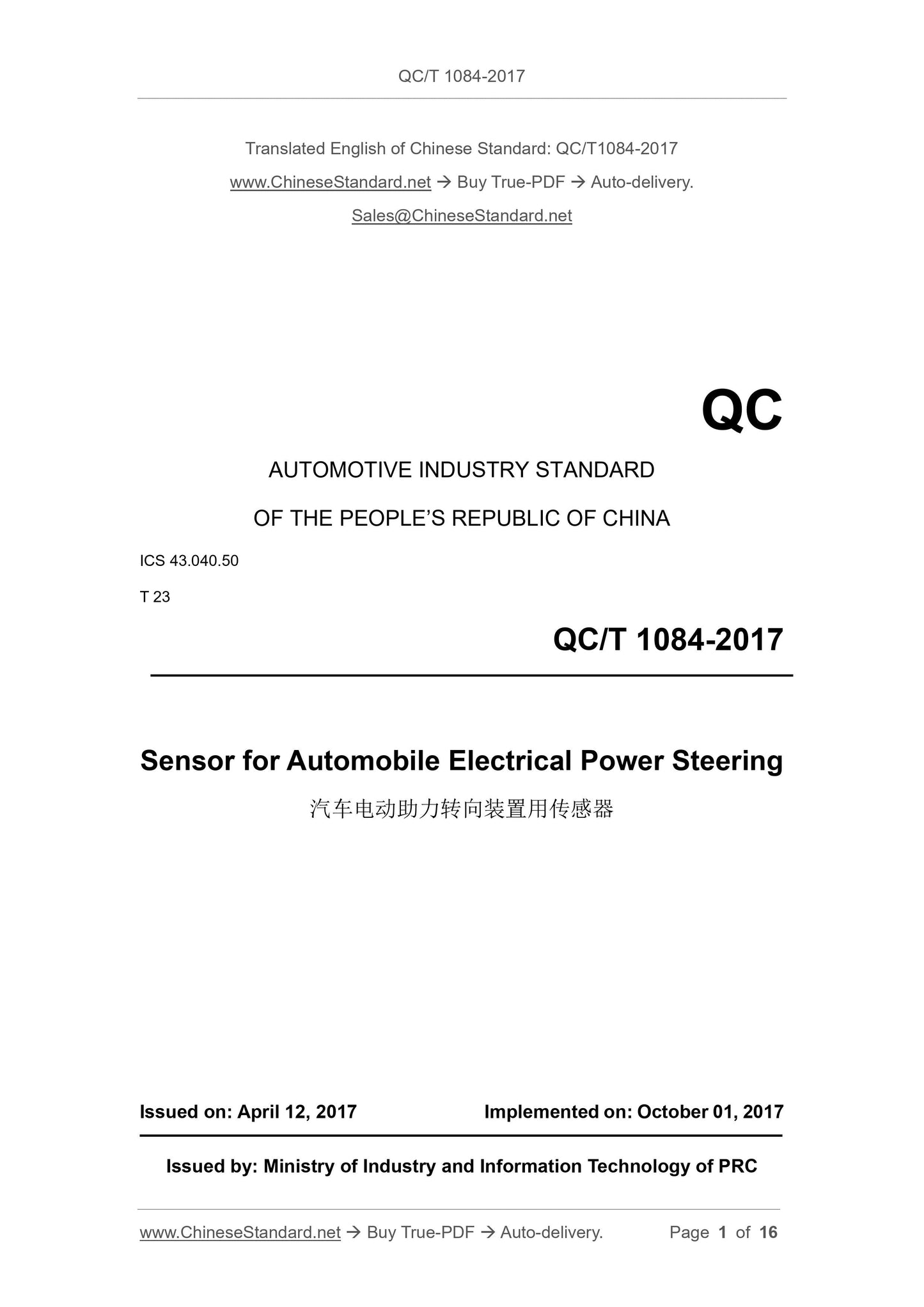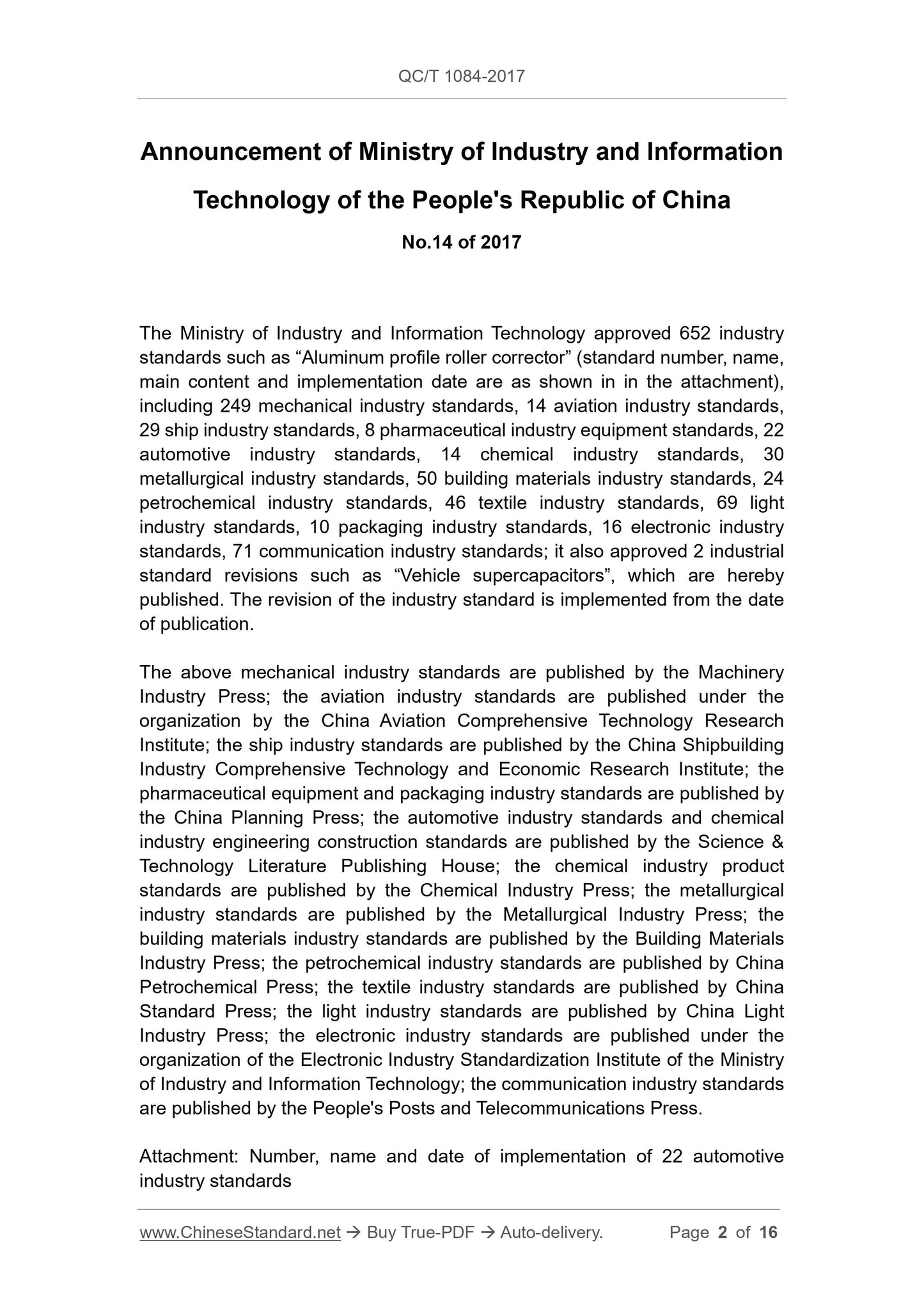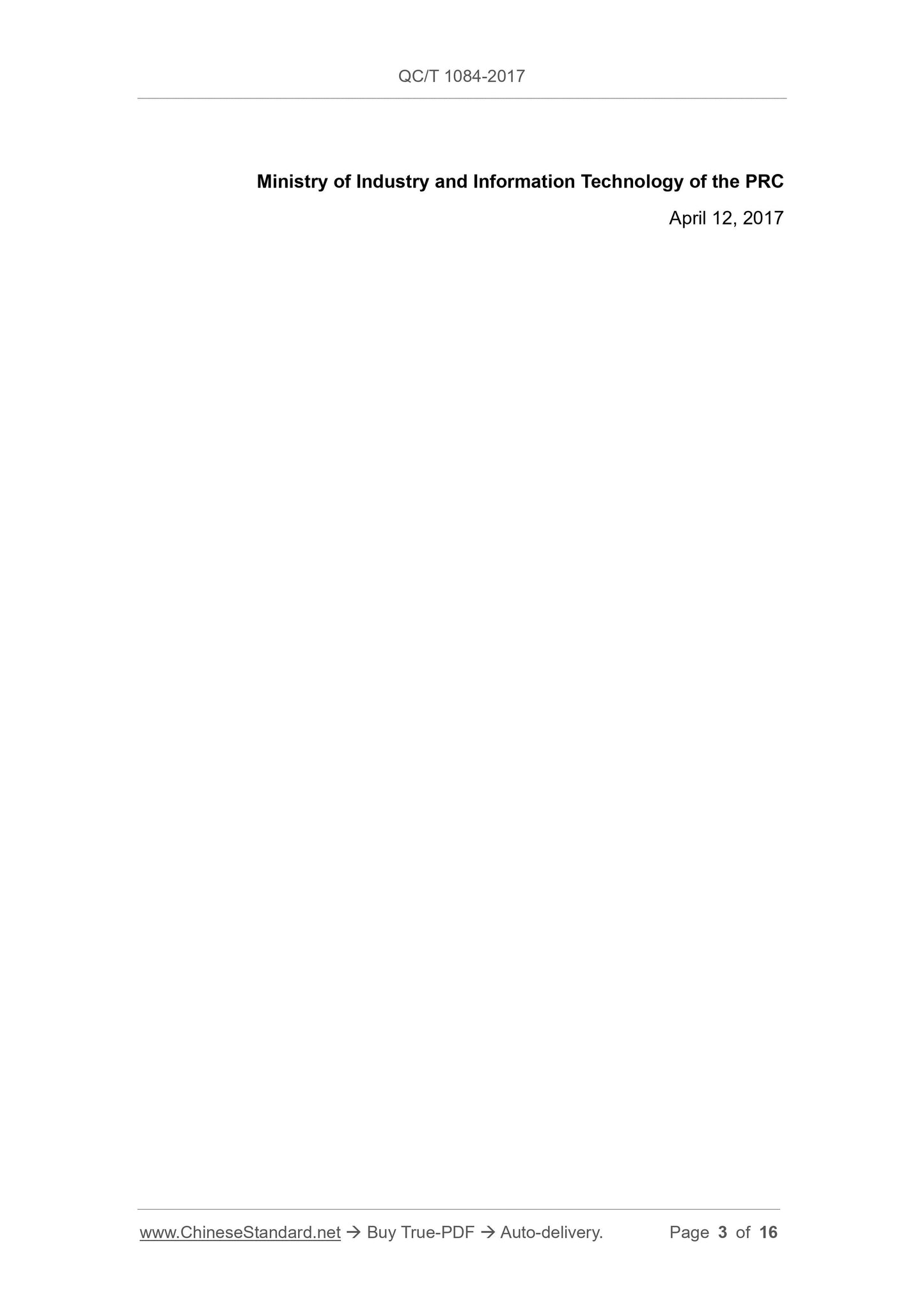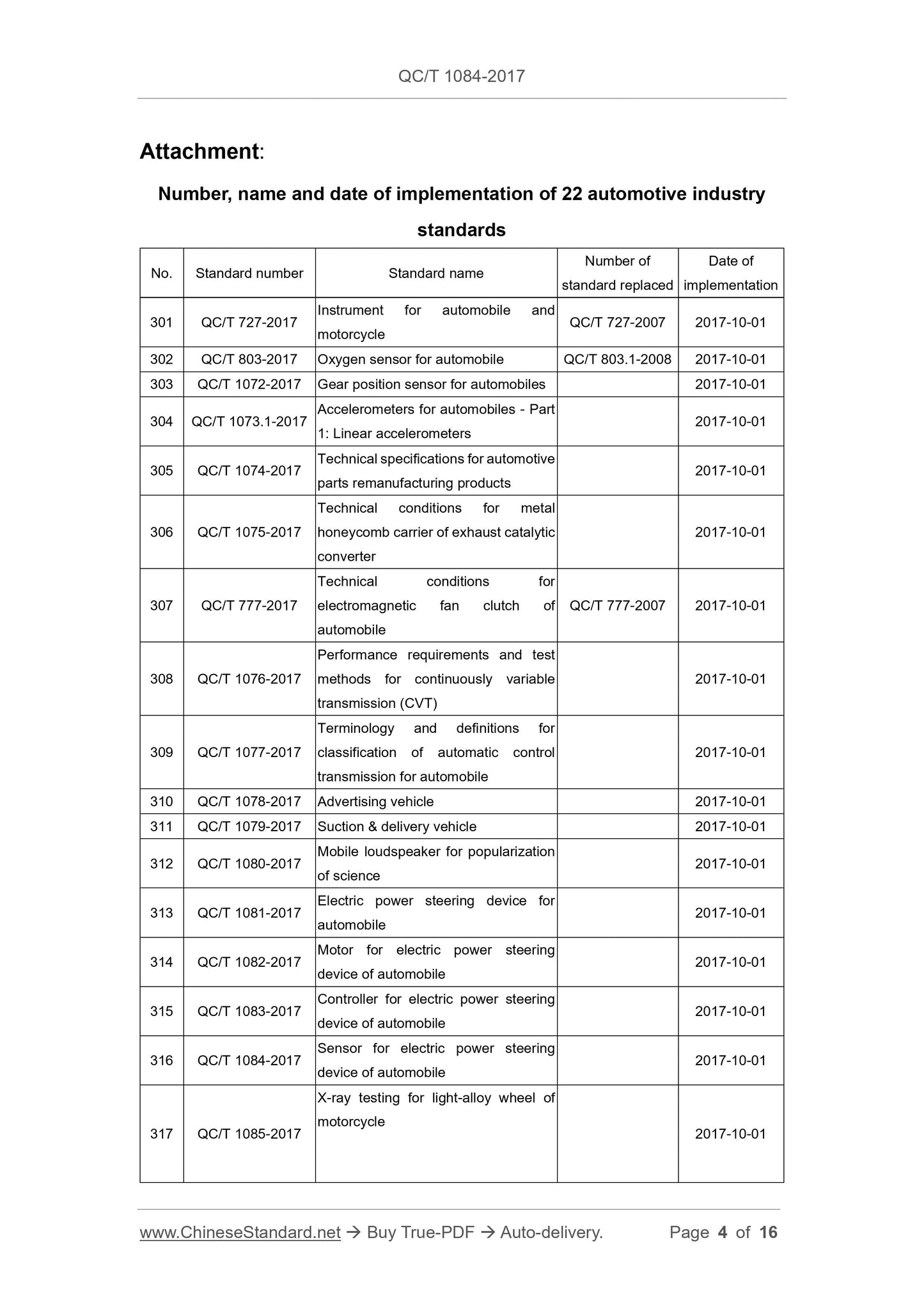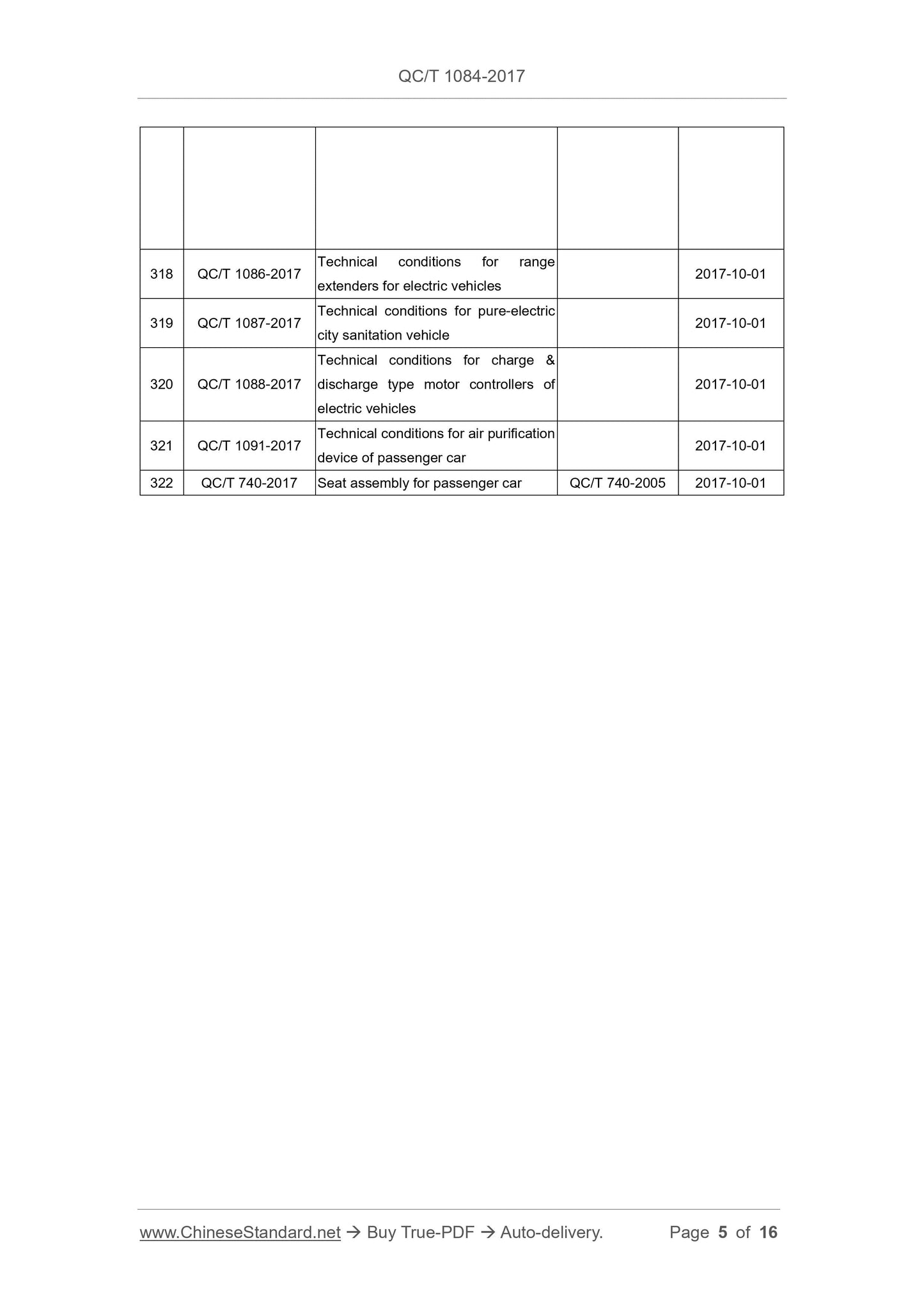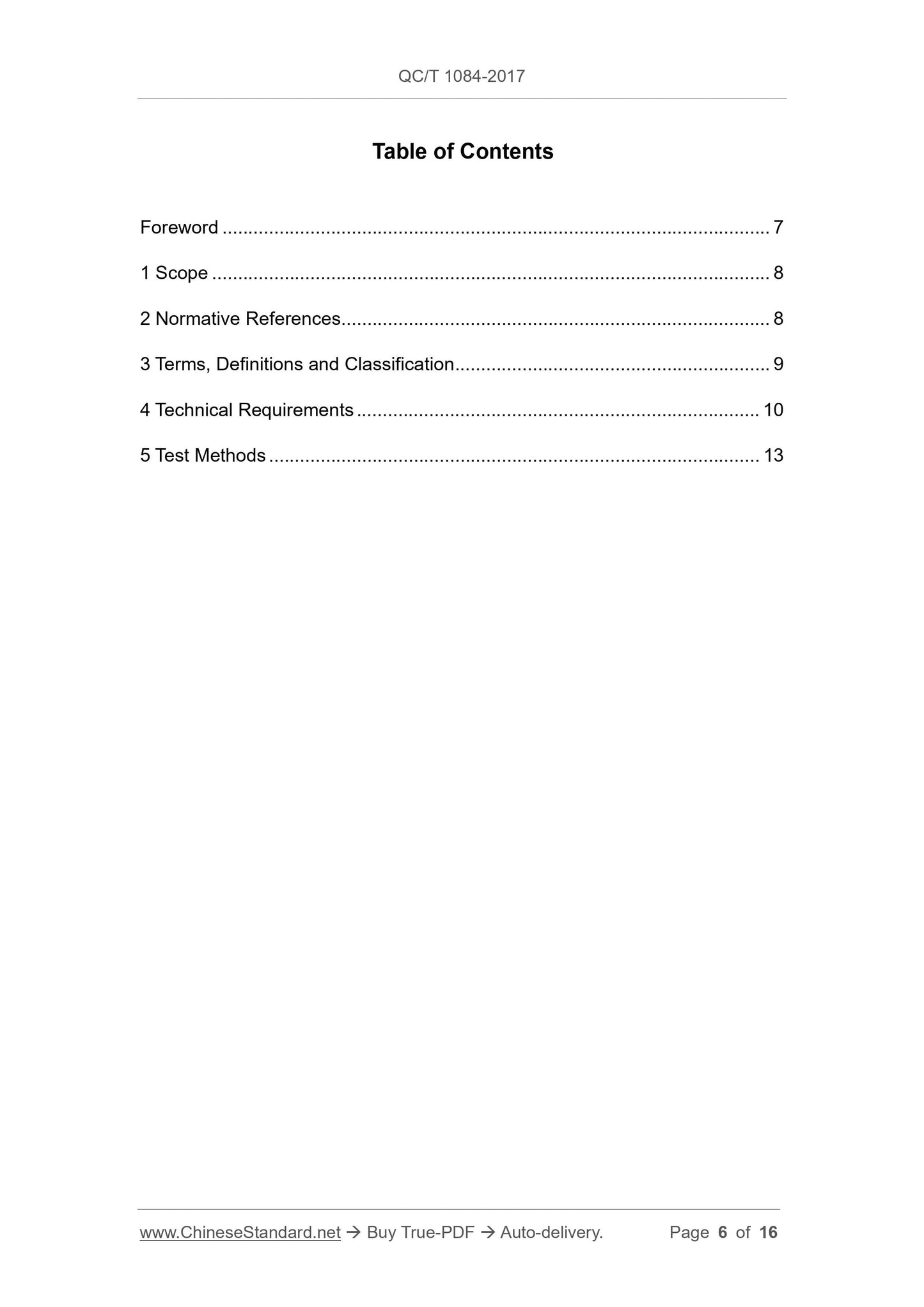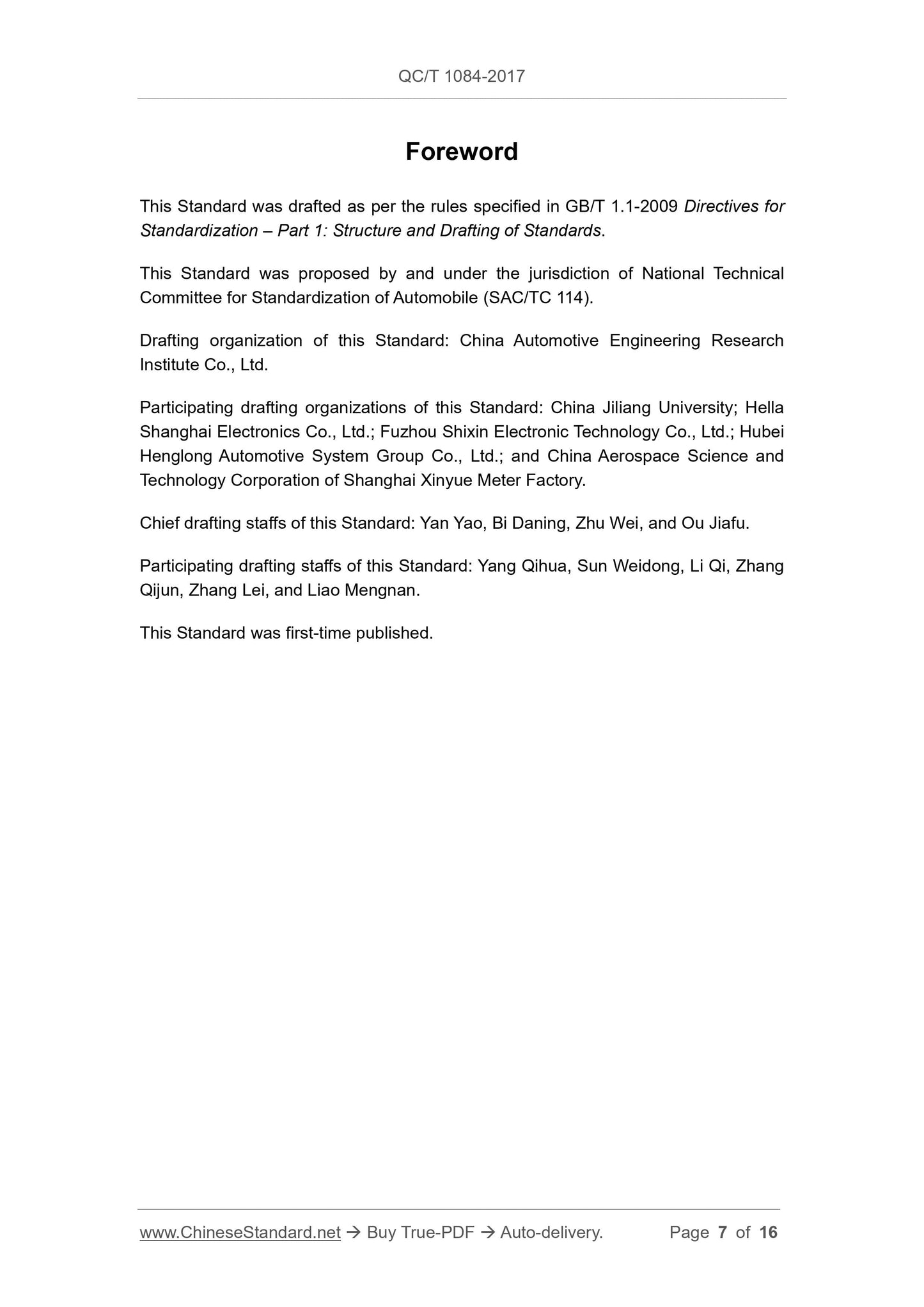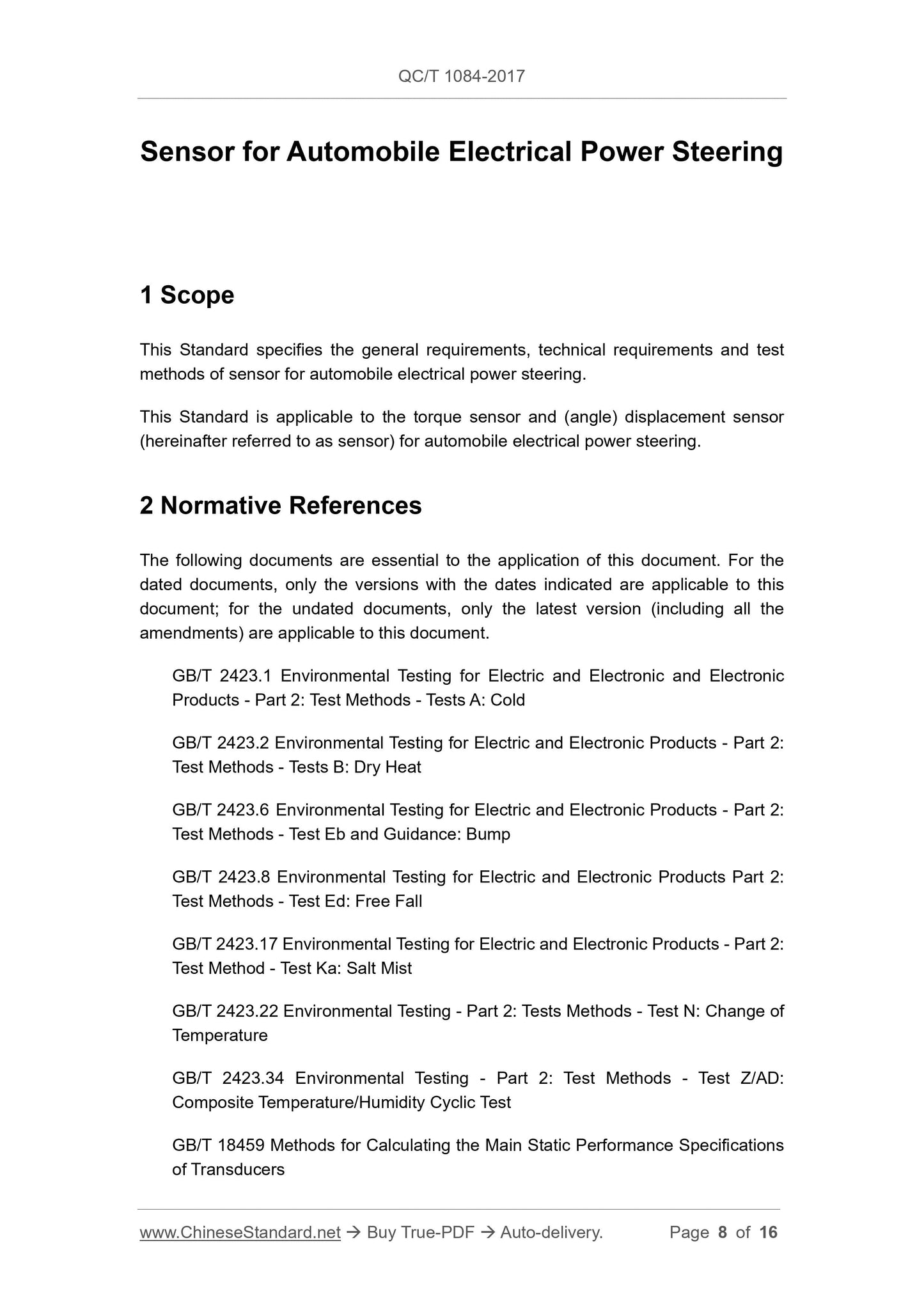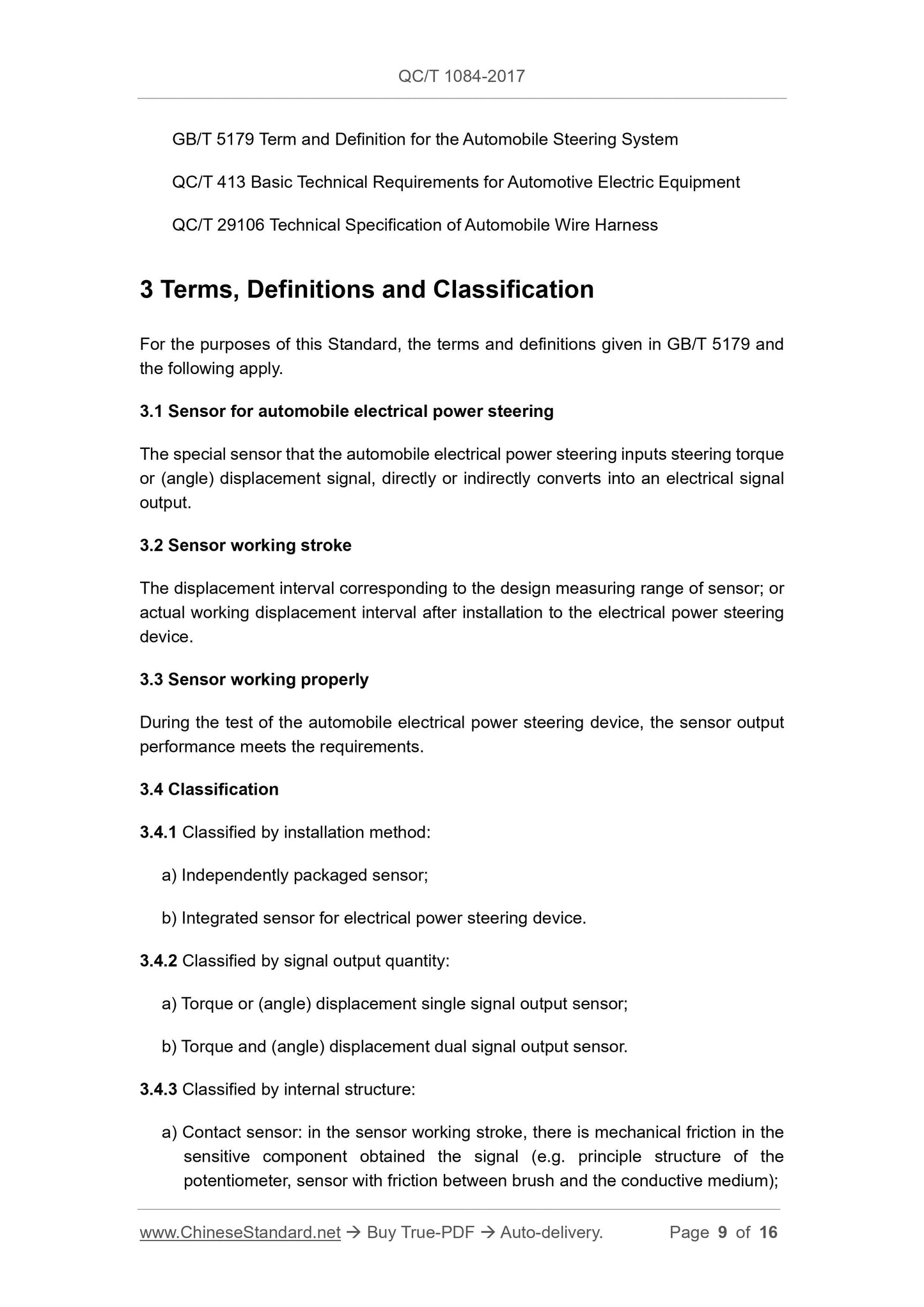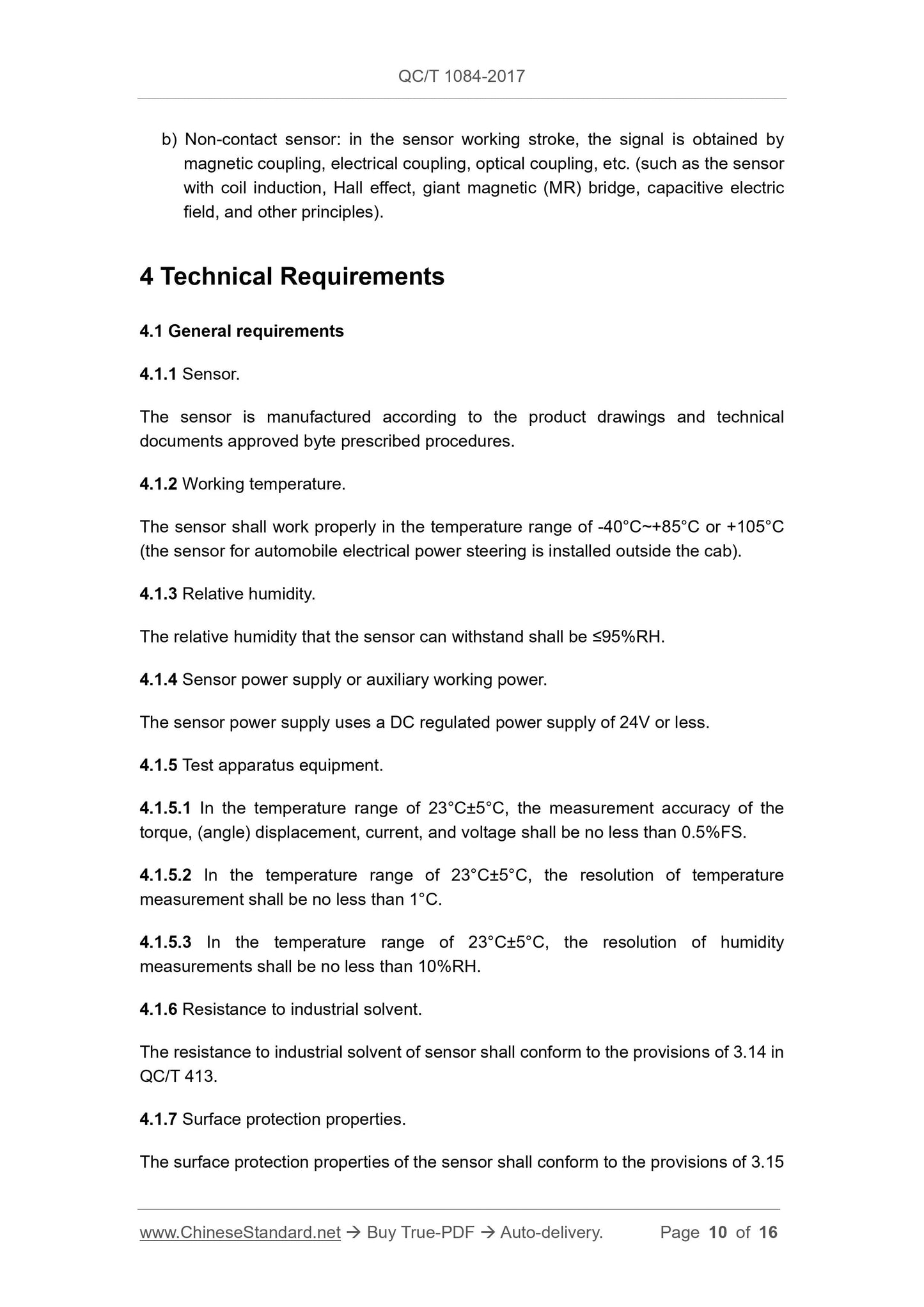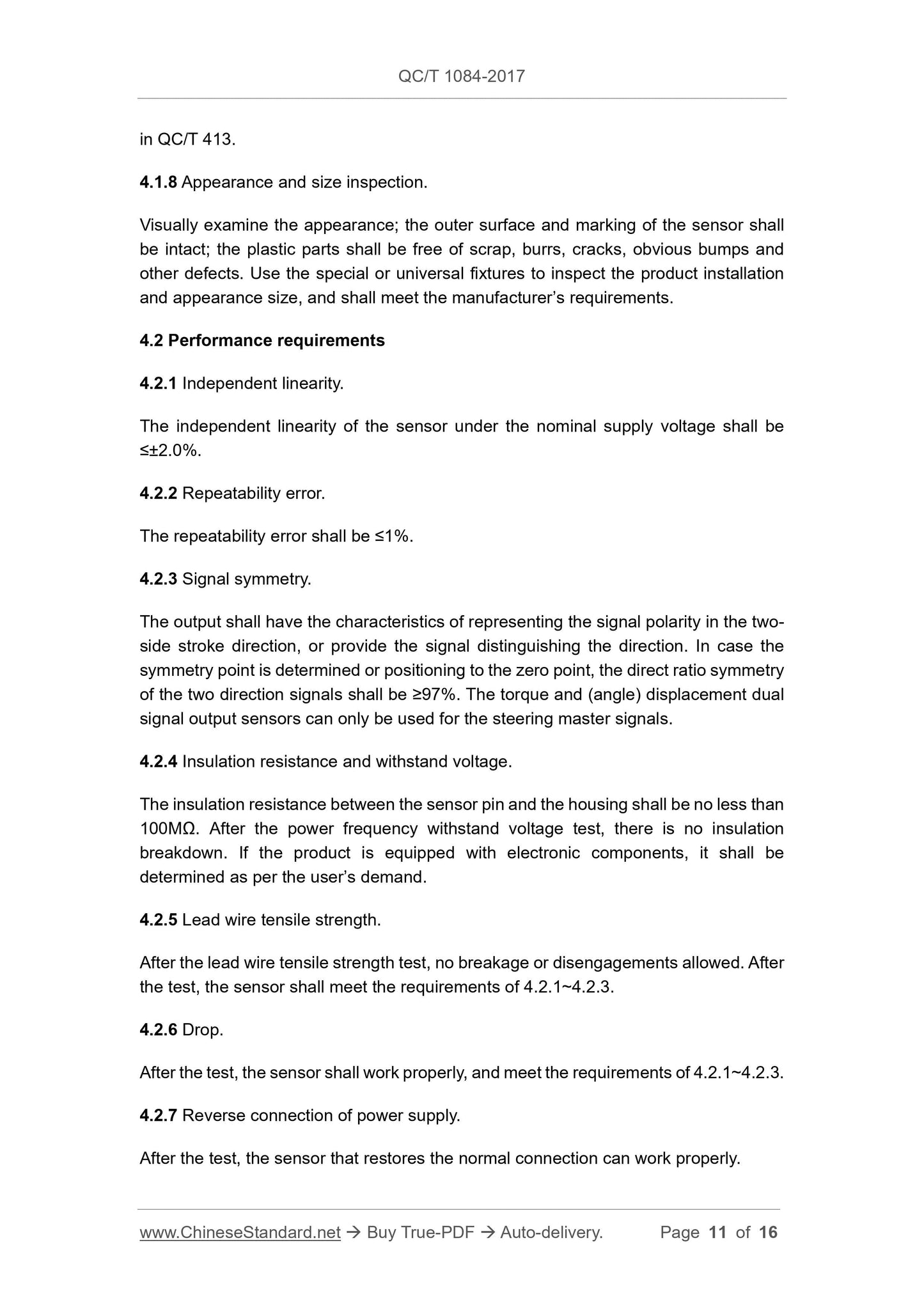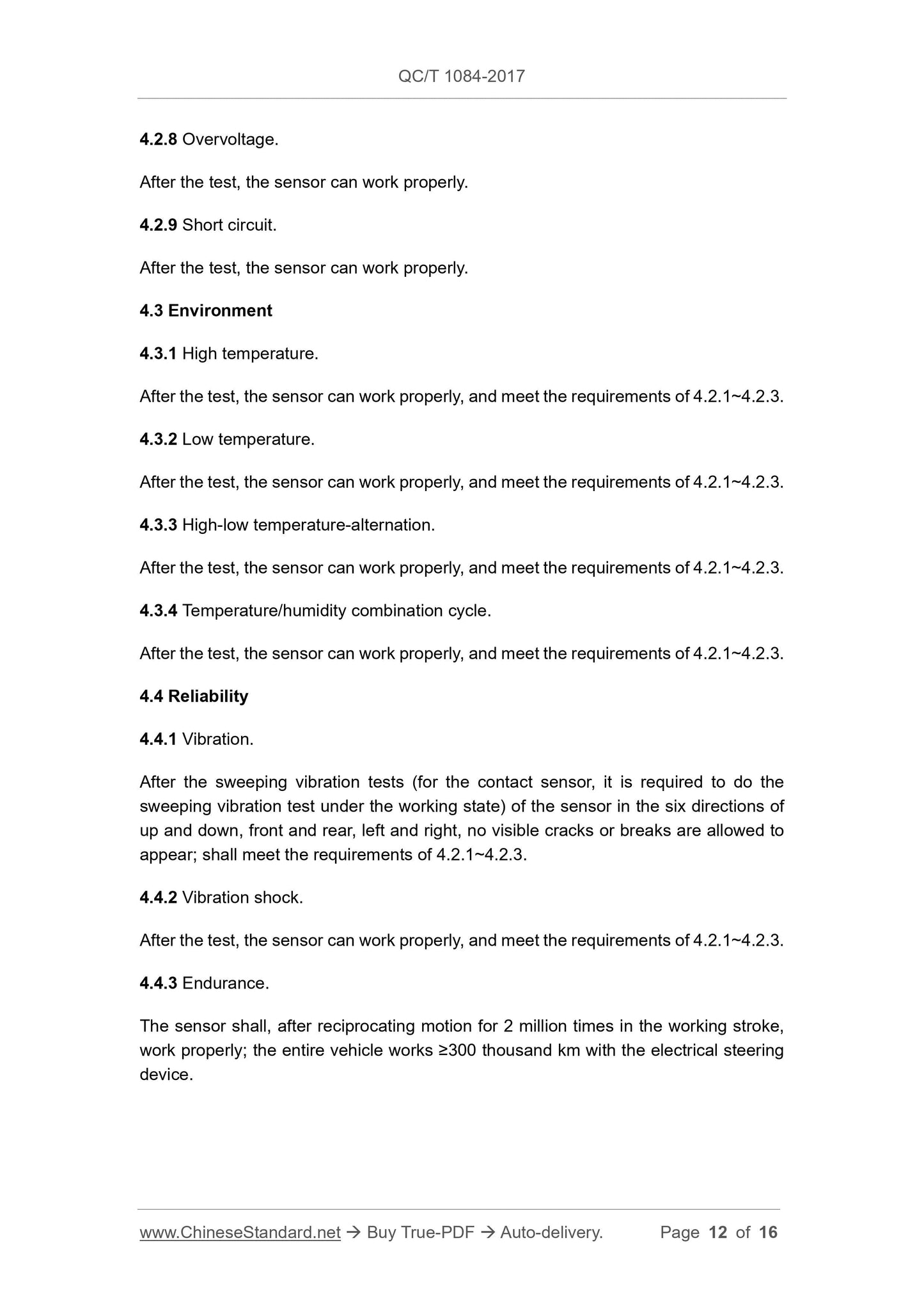1
/
of
12
www.ChineseStandard.us -- Field Test Asia Pte. Ltd.
QC/T 1084-2017 English PDF (QC/T1084-2017)
QC/T 1084-2017 English PDF (QC/T1084-2017)
Regular price
$130.00
Regular price
Sale price
$130.00
Unit price
/
per
Shipping calculated at checkout.
Couldn't load pickup availability
QC/T 1084-2017: Sensor for Automobile Electrical Power Steering
Delivery: 9 seconds. Download (and Email) true-PDF + Invoice.Get Quotation: Click QC/T 1084-2017 (Self-service in 1-minute)
Newer / historical versions: QC/T 1084-2017
Preview True-PDF
Scope
This Standard specifies the general requirements, technical requirements and testmethods of sensor for automobile electrical power steering.
This Standard is applicable to the torque sensor and (angle) displacement sensor
(hereinafter referred to as sensor) for automobile electrical power steering.
Basic Data
| Standard ID | QC/T 1084-2017 (QC/T1084-2017) |
| Description (Translated English) | Sensor for Automobile Electrical Power Steering |
| Sector / Industry | Automobile and Vehicle Industry Standard (Recommended) |
| Classification of Chinese Standard | T23 |
| Word Count Estimation | 15,172 |
| Date of Issue | 2017-04-12 |
| Date of Implementation | 2017-10-01 |
| Regulation (derived from) | Ministry of Industry and Information Technology Bulletin 2017 No.14 |
| Issuing agency(ies) | Ministry of Industry and Information Technology |
| Summary | This standard specifies the general requirements, technical requirements and test methods for sensors for automotive electric power steering. |
Share
